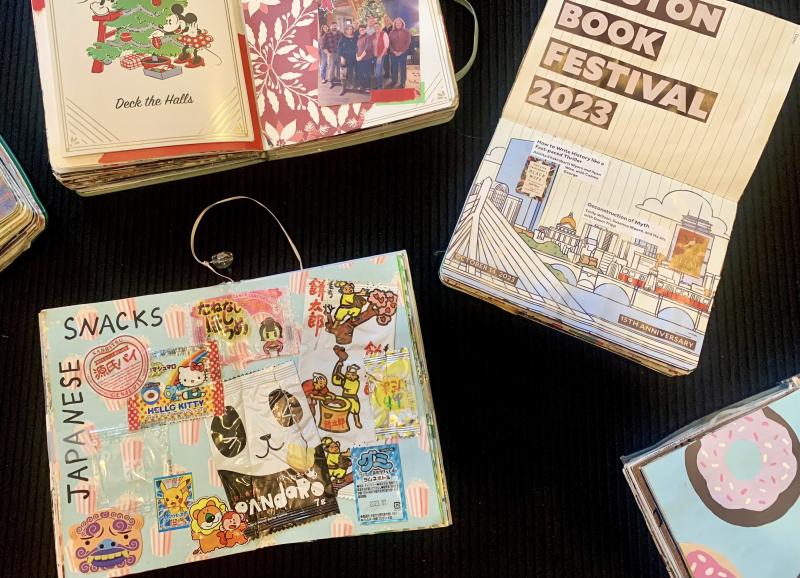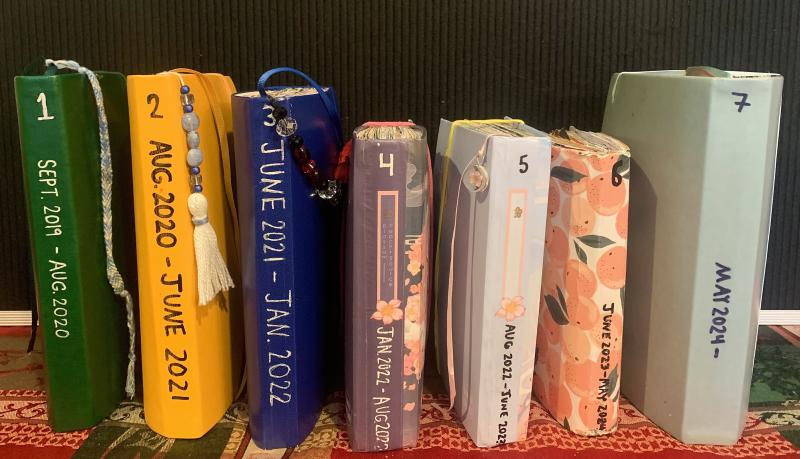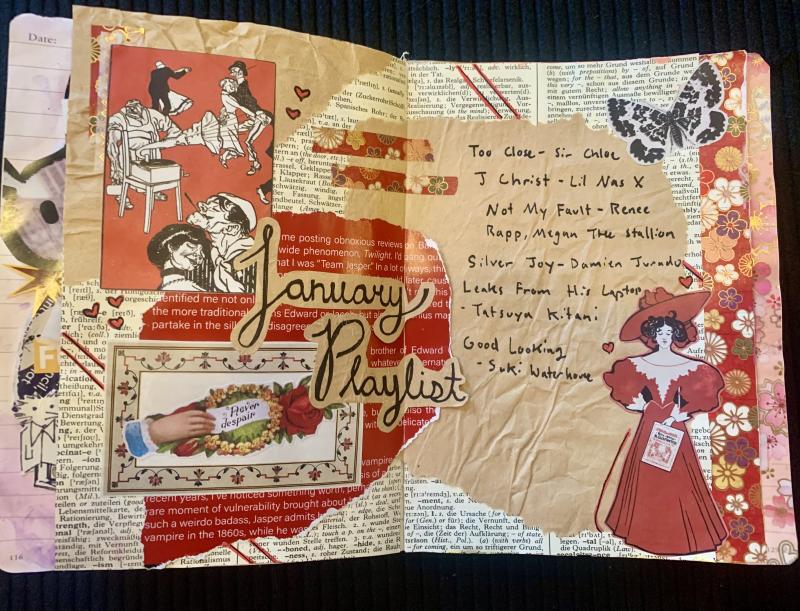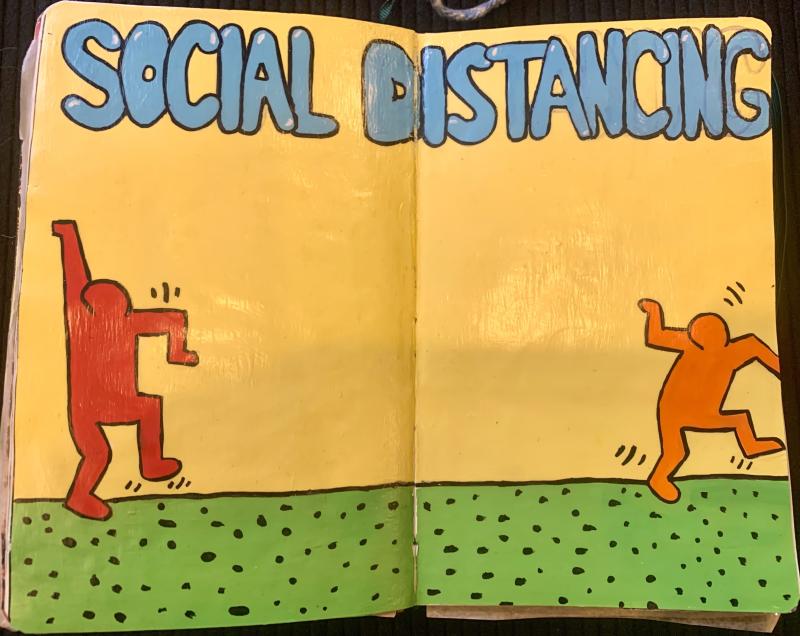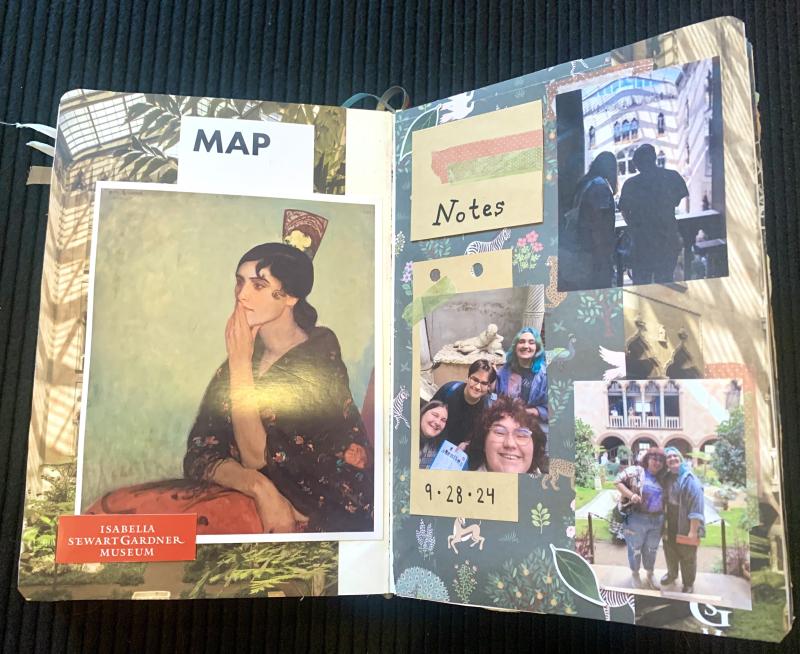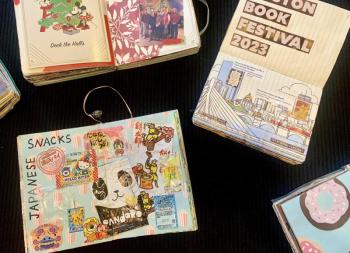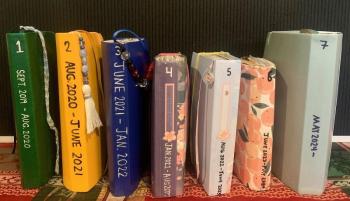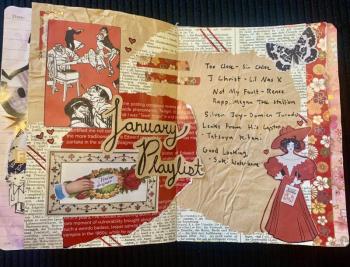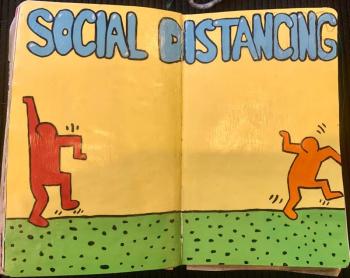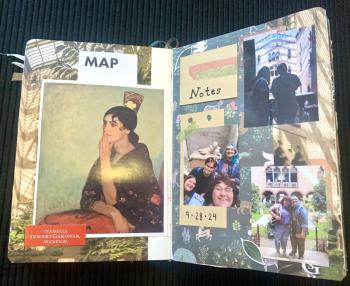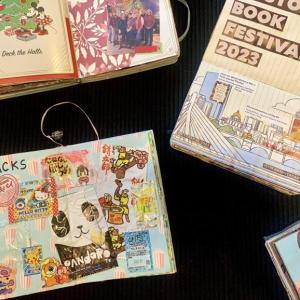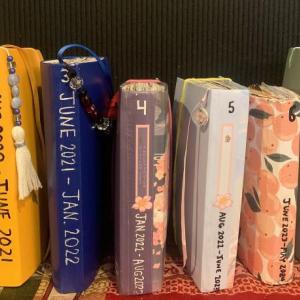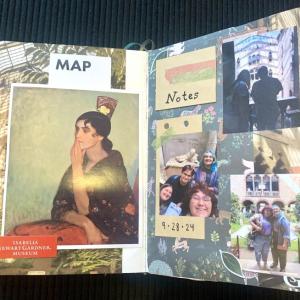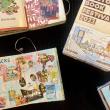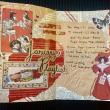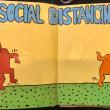Image Id 679319 for Node 255040
It’s easy to forget a happy moment. According to the Washington Post, some believe it's adaptational; our brains hoard unpleasantness to keep us safe in the future. It can also come down to age as people in their 20s and 30s have more difficulty living in the present and experiencing its joys, compared to older populations.
In September 2019, during my sophomore year of college, I began keeping a journal precisely for the above reasons. As someone prone to bouts of depression (a habit the stresses of college did not help), I wanted a way to memorialize the new, exciting things I was experiencing. Seven years later, I’m halfway through my seventh journal. It’s part scrapbook, part sketchbook, part whatever-I-want. Birthday cards? Pinterest-inspired art projects? Snack packaging? They all go in there.
Besides a handful of exceptions, everything has remained positive. For instance, the only mention of the COVID-19 pandemic is from summer 2020: an original pseudo-political cartoon about social distancing based on artist Keith Haring’s The Dance (1992). For a time that I recall more as prolonged TV static than an actual period of my life, it’s nice to know my past self could find some humor in it.
Plus, with a day job that centers on writing (like right now!), art journaling lets me be creative in a different way. It’s chaotic and unfiltered. It captures me as I am in that moment, whether it's writing down the new songs I discover each month or collaging magazine clippings. There’s no limit.
You also don’t need fancy supplies to do it. Admittedly, I’ve amassed quite a collection of crafting materials, but when I started, I only had three colored pens, a pack of stickers, and whatever recyclables I could scrounge up.
For those who may like a more structured approach, there are other options:
Writing journals
Writing journals provide a non-judgmental zone to process emotions: the good, the bad and the ugly. Setting aside a few minutes every single day to write can help manage anxiety, reduce stress, and manage depression, according to the University of Rochester Medical Center. Journals can also be useful to track patterns of behavior, and help identify and address emotional triggers.
Bullet journals
The aesthetic darling of the Instagram feed, bullet journals typically combine writing and drawings to create life planners. This is a place to log to-do lists, create weekly or monthly calendars, and keep track of moods or goal progress. It can help people take accountability by getting intentions out of the mind, and into the world. One study even found that people are 42% more likely to achieve their goals just by writing them down.
Junk journaling
The process of taking what is otherwise considered “junk” and giving it a second life. This can be as complicated as creating a unique journal by binding together repurposed materials (magazines, postcards, cardboard, fabric scraps, etc.) or as simple as collaging together receipts and product tags from your latest shopping trip. It’s especially good practice around the holidays. Torn gift bags and ripped wrapping paper make great backgrounds.

